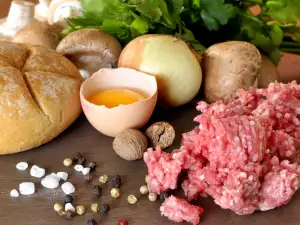Magnesium is a mineral with the participation of which many processes are carried out in the body and therefore its presence in the body is important for maintaining a number of vital functions. Magnesium is involved in the processes of breaking down proteins, lipids and carbohydrates. If the amount of magnesium in the body decreases, this is felt in insulin resistance, in the problems that occur in the reproductive organs and slow metabolism.
Necessary levels of magnesium for the body
There are no absolute exact amounts of magnesium that are needed for the body to function optimally, but it is clear that men need more magnesium.
Also, as age changes, the required amounts of the mineral also change. Both sexes have the greatest need for magnesium between the ages of 14 and 18. After that, the required amounts fall and after the age of 30 they remain relatively constant.
The accepted amount per day is about 300-400 milligrams. The individual dose should be 6 milligrams per kilogram of body weight and 10 milligrams per kilogram is recommended for children, because they need more magnesium during the period of increased growth.
Magnesium deficiency and its supply
Magnesium deficiency is felt on a physical level through various symptoms - cramps and heaviness in the legs, easy fatigue, insomnia, restlessness, migraines are the body's most common reactions to magnesium deficiency. Since it is involved in more than 300 metabolic processes in the body, we should not ignore the deficiency of this mineral.

It can be obtained through additional intake or through food. This is the easier and more beneficial way for the whole organism. For those who are fans of healthy diets, the best foods to get magnesium with are fruit and vegetables. Here are which fruit and vegetables are rich in magnesium:
Fruit and vegetables rich in magnesium
Among the magnesium-rich vegetables are beans and other legumes. To extract the maximum amounts, food should be steamed. Beans, lentils, chickpeas and peas will provide the body with the magnesium it needs for the day.
Other vegetables rich in magnesium are leafy greens. The leader among them is spinach, which contains about 80 milligrams of magnesium per 100 grams of green mass. Cauliflower and potatoes contain about 25 milligrams of magnesium in 100 grams of the vegetable and along with legumes represent the group of vegetables rich in this mineral.
Among fruit with a high magnesium content, avocado stands out. It's a real superfood and provides 15 percent of the required daily intake. The mineral is also found in good quantities in other exotic fruit - pineapple, passion fruit, bananas. Figs are another tasty and healthy fruit for getting magnesium.
Many dried fruit are also recommended as a good opportunity to combine the taste with the benefit of providing the body with magnesium through food - figs, plums, apricots, dates and raisins are very rich in this nutrient in dried form.
Also check out the other magnesium-rich foods.




















Comments